An Announcement
This announcement appeared in the October 14, 1927, edition of the Mason County Journal:
“SIMPSON LOG. COMPANY
LET BIG CONTRACT
Branch Will Extend 18 Miles
into Olympics—
Contractors Now Have
Crews at Work
In advance preparation for opening to Shelton a large body of timber in the upper Skokomish regions of the Olympic mountains the Simpson Logging Company has let the first of several contracts for building an eighteen-mile branch of the Peninsular Railroad. The successful bidder for the first section of 6½ miles of grade was the Allen-Govan Company, recently incorporated for the purpose of carrying through this particular contract and for future operations. The contractors have already started work on their winter’s job which includes much rock work and heavy construction found as the foothills are reached. A large shipment of heavy machinery and tools passed through town last week, including two power shovels and camps are being built and crews assembled to rush the work for completion early next summer.
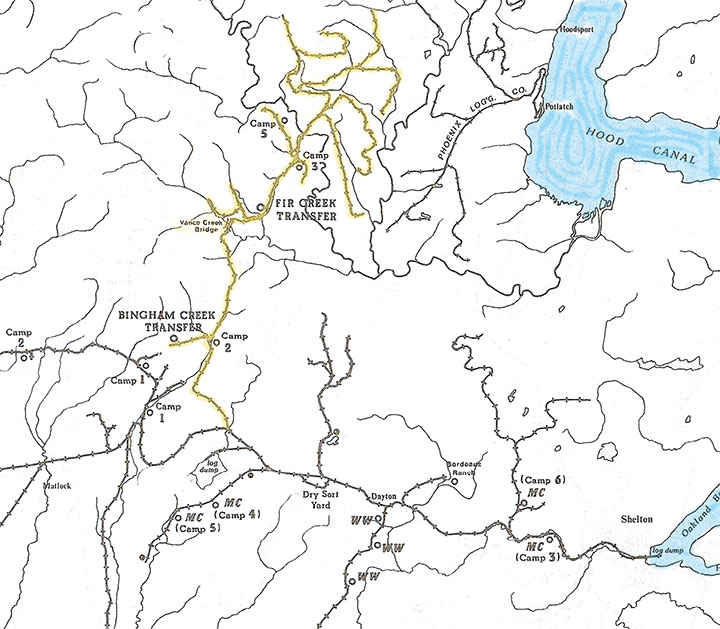
-Map by Dale Jost, M.D.
Vance Creek Branch
The new branch leaves the Peninsular Railroad near Lake Newatzel and runs northerly toward Vance Creek at the head of the Skokomish Valley but taking a different route than the old feeders used when that section was first logged and keeping higher in the hills. A considerable body of timber will be opened by this first section which can be logged while the remainder of the railroad as planned is being completed, which is expected to be two or more years off. Either a new camp will be added to the operation of the Simpson Company or one of present camps located on the new line, likely the former as the company is gradually expanding in its log production with each year.
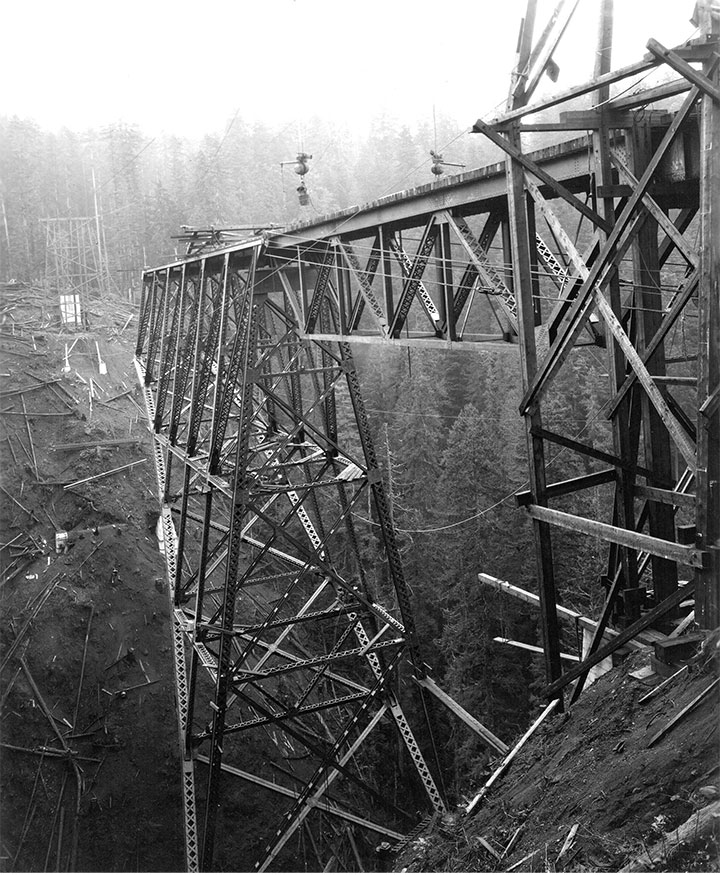
-Photo by W.S. Heckman, Ziegler’s Studio and Camera Shop.
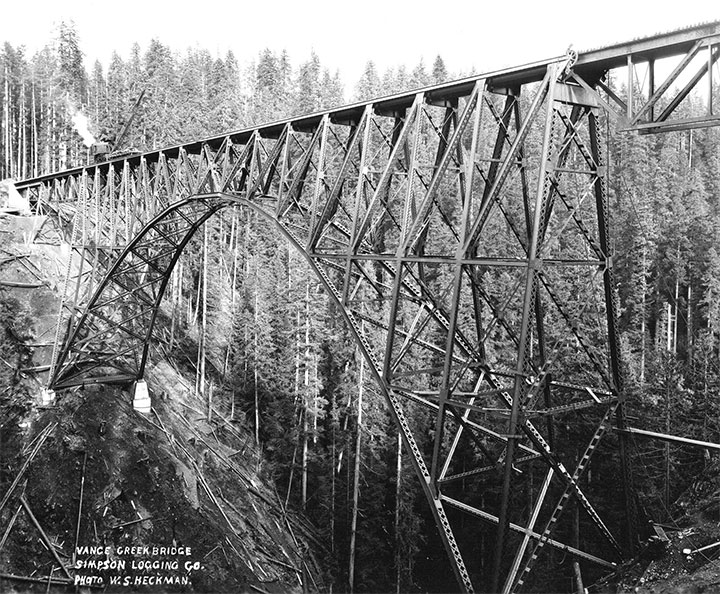
-Photo by W.S. Heckman. Ziegler’s Studio and Camera Shop.
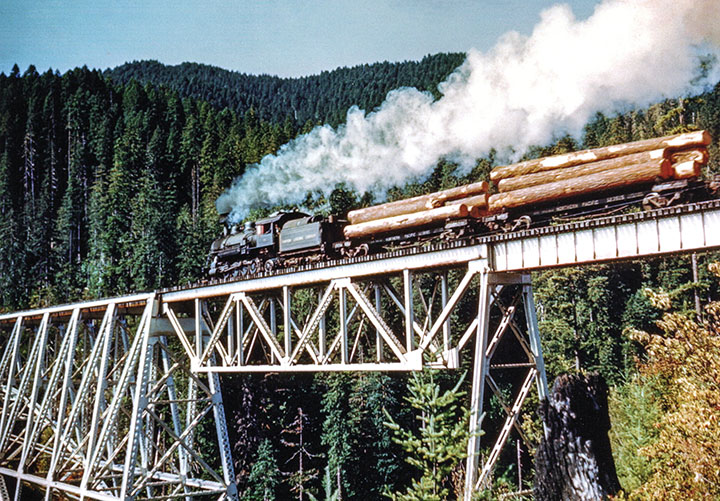
The entire line will extend some eighteen miles into the Olympic region and after crossing Vance Creek will turn eastward toward Hood Canal and cross the South Fork of the Skokomish river into the district between the forks where the largest body of timber owned by the Simpson Company is located. It is said that the timber ahead of the branch alone is sufficient for thirty years of ordinary operation.
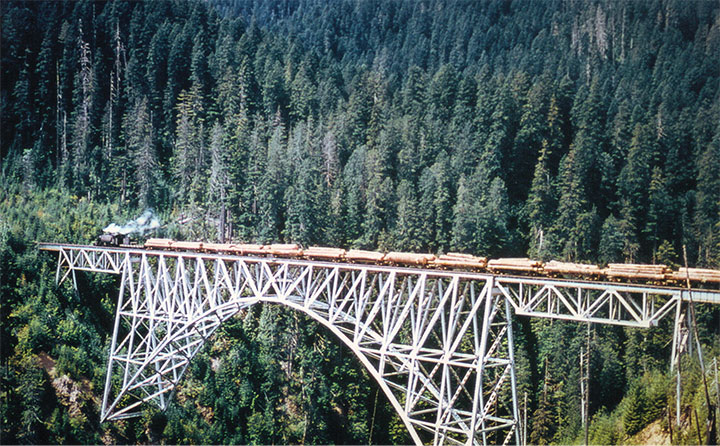
-Photo courtesy of Simpson Archives.
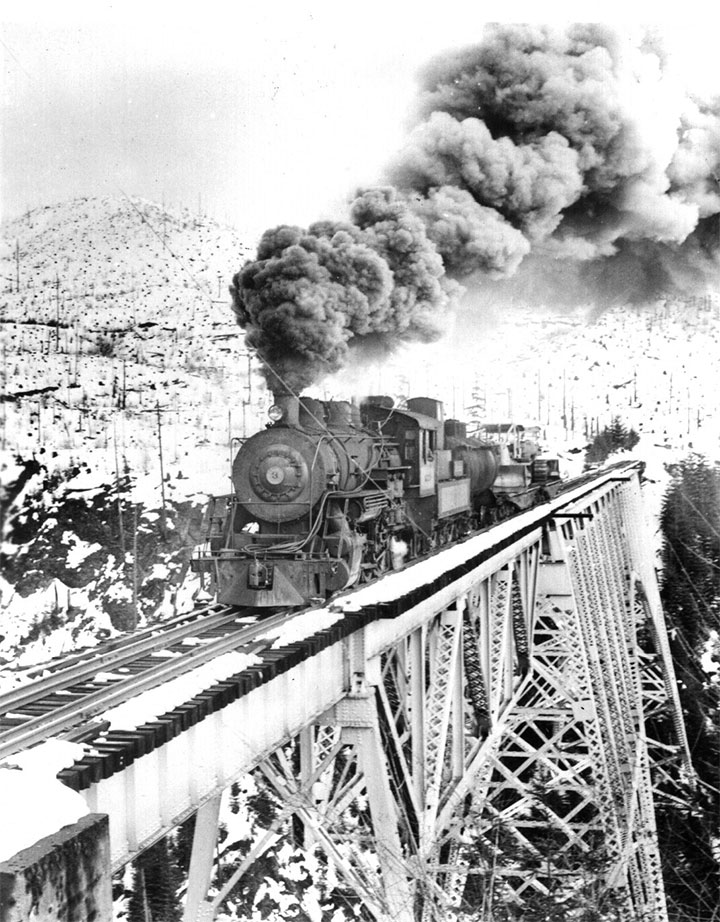
-Photo by John Larison.
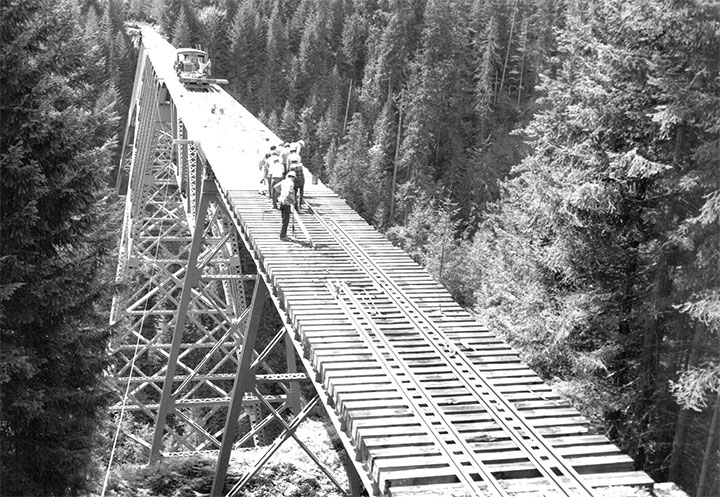
Two Long Steel Spans
When the branch is finally completed it is expected that the total cost will be around three-quarters of a million dollars which gives some idea of the magnitude of the project undertaken by a logging concern for a branch line. While the line passes through very rough and rocky country and largely “up and down” more than half the cost will be due to two long and high steel spans crossing the two streams referred to. The main span across Vance Creek gulch will be a 400-foot steel arch, with two approach truss spans making another 400 feet or a total of 800 feet of steel bridge. The South Fork bridge will be somewhat smaller, but both will be about 400 feet above the stream beds.
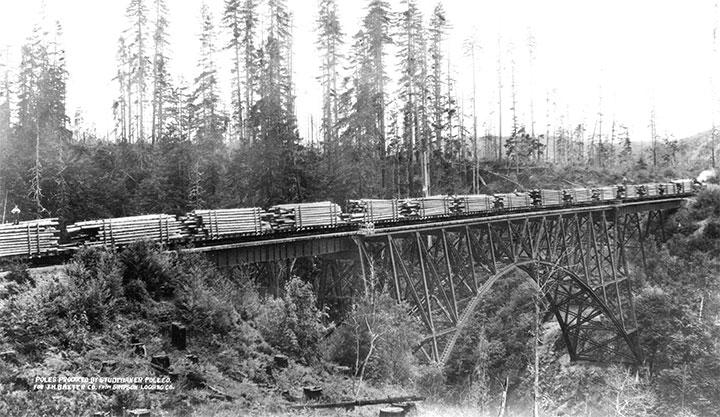
The Vance Creek bridge will be first but because of its now inaccessible location the heavy material cannot be taken in or the work carried on until the Allen-Govan contract is completed and track laid, but it is expected that this, as well the first bridge for which contract has not yet been given, can be finished within the next year after which either contracts can be let in order. This news is of particular interest to Shelton as it means the bringing here of a new and the last large body of timber within reach and out of government ownership, and thus adds another considerable span of life of the local logging and milling operations of which this generation is not likely to see the finish.”
The contract for the two big spans was let out to the American Bridge Company of Chicago and the steel was fabricated at the company mills in Trenton, New Jersey. By March of 1929, the first of the two spans, the Vance Creek bridge, had been completed. The work of designing, fabricating and erecting was so perfect that the arch connected at the contact center within less than half of an inch.

The new bridge is 346 feet above Vance Creek bottom and 827 feet long with its central span of 4232 feet. The grade of three miles long had already been completed and as soon as rail is laid on it, construction of the second span over the South Fork of the Skokomish River would be started.
The second span was completed by September 1929, and stood 365 feet over the riverbed. However, the main arch span was just 366 feet long. This bridge remained in service until 1947 when the upper part of the branch line was abandoned. The bridge was planked over for truck use and the road was later turned over to the U.S. Forest Service, who put a modern concrete deck on the bridge. Today there is easy access to the bridge for those wishing to drive over it.
In the meantime, thanks to a contract with Simpson and the U.S. Forest Service, the Vance Creek bridge remained in operation until 1985 when it was abandoned. By the early 1980s, the bridge was recorded in the Guinness Book of Structures as the highest railroad bridge in North America. Since then, however, a higher arch span has been located in Mexico.